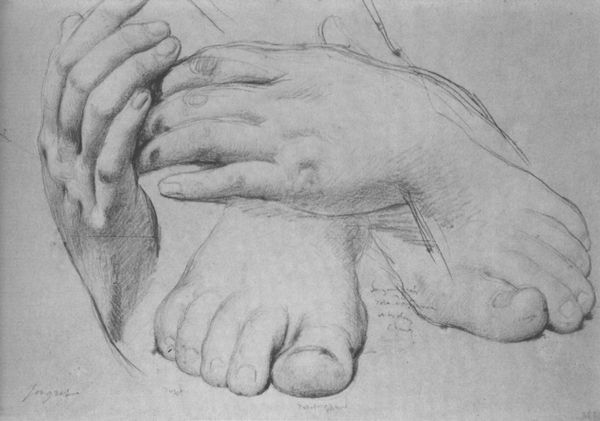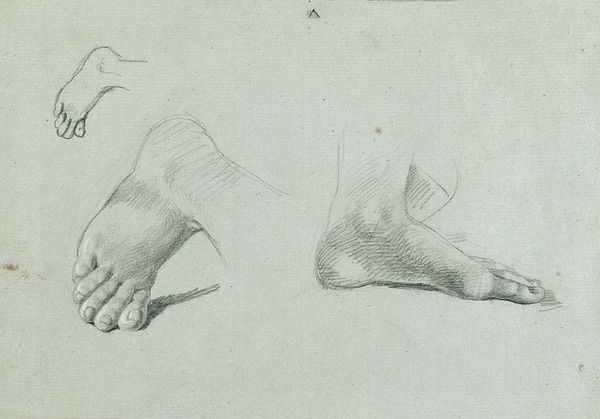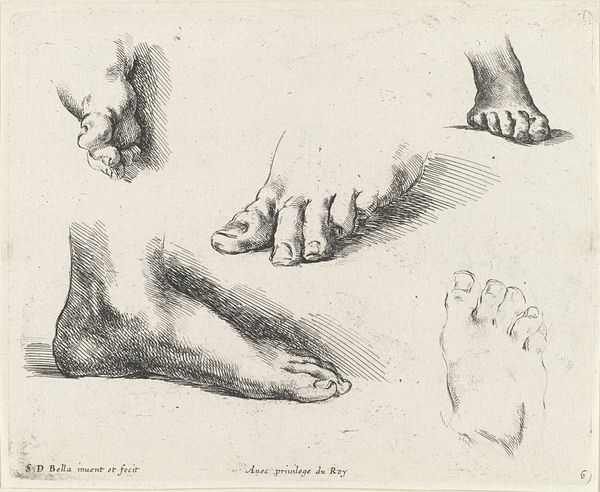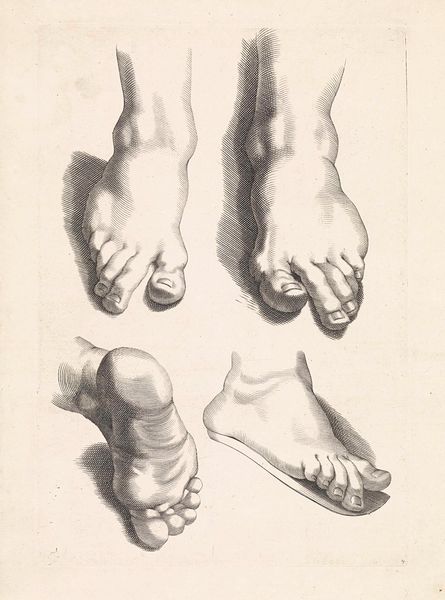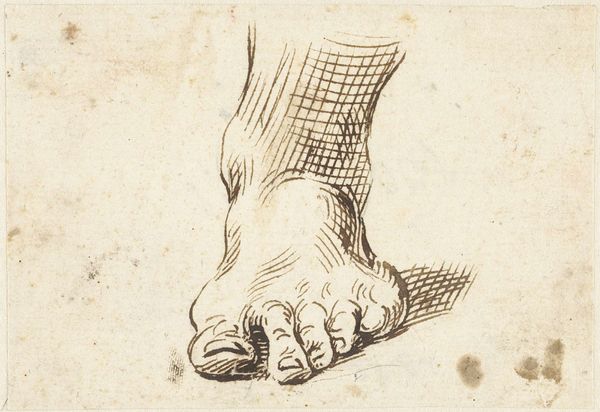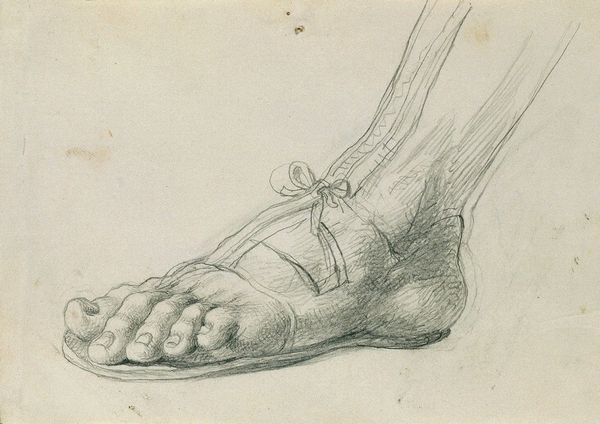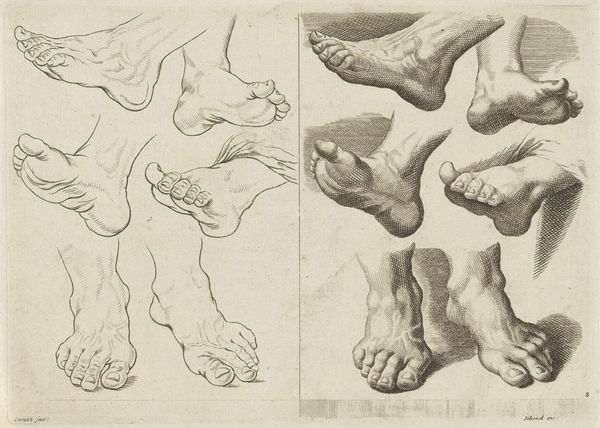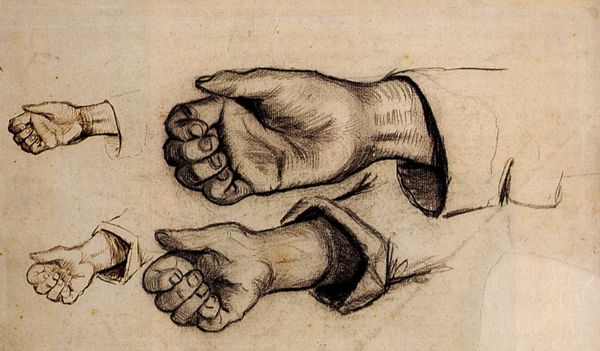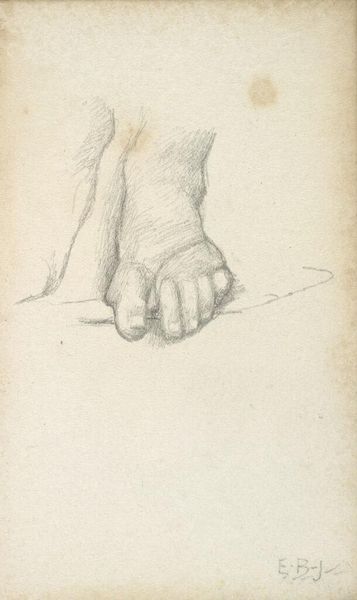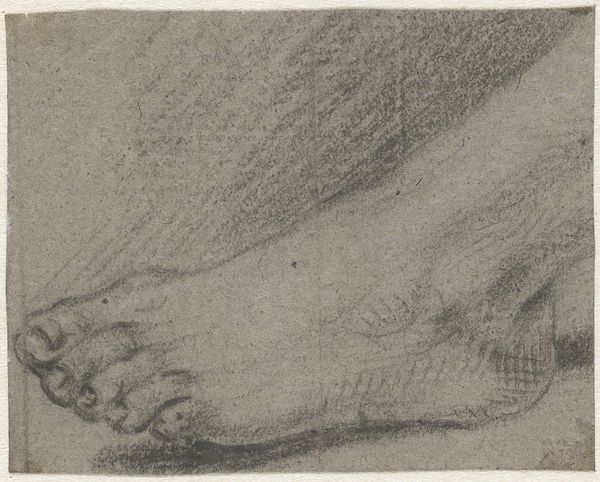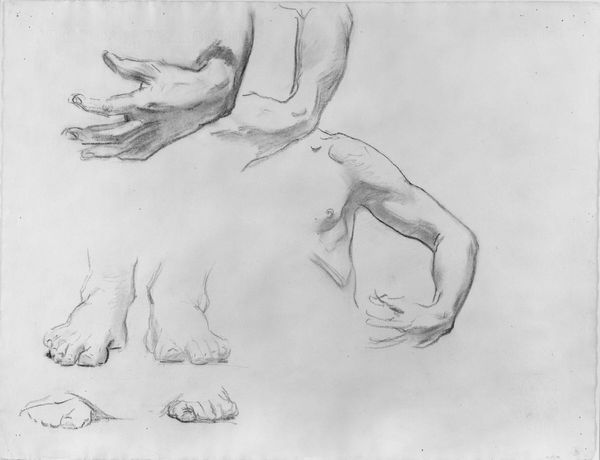
Laokoons venstre fod og den ældste søns højre fod 1628 - 1629
0:00
0:00
drawing, pencil
#
pencil drawn
#
drawing
#
figuration
#
form
#
pencil drawing
#
ancient-mediterranean
#
pencil
#
line
#
academic-art
#
nude
#
realism
Dimensions: 173 mm (height) x 216 mm (width) (bladmaal)
Editor: This drawing, "Laokoons venstre fod og den ældste søns højre fod" by Willem Panneels, dating from 1628-1629, shows two feet rendered in precise detail with pencil. The stark realism is captivating, almost unsettling. What do you see in this piece beyond the technical skill? Curator: It's crucial to recognize the context. Panneels was studying ancient sculpture, specifically the Laocoön. The drawing served a dual purpose. On one hand, it was about mastering form, demonstrating artistic skill according to the academic standards of the time. On the other, it reflects the fascination with classical antiquity that pervaded the era. How might studying and disseminating images of such revered classical sculptures impact artistic production in the 17th century and beyond? Editor: So, this wasn't just about drawing feet; it was about power dynamics within the art world. The artist gains authority through replicating a known symbol of art history? Curator: Precisely! Think about who had access to the Laocoön and who then interpreted and disseminated that access through drawings. Also, how does choosing to represent only *parts* of the original sculpture shape our understanding and engagement with it? Editor: It reframes the narrative, depoliticizes it almost. It removes the drama and focuses on idealized form instead. It's interesting how the pencil, a humble tool, plays a role in that elevation of artistic standards. Curator: Yes! And consider the political implications of who controls those standards. This seemingly simple drawing engages with complex questions of artistic authority, access, and the enduring influence of the classical world. What does this new perspective make you think about the museum’s role in exhibiting pieces like this today? Editor: I now realize the museum doesn't just *show* the drawing. It presents a whole discourse about the appropriation and politics of art, opening avenues for many voices.
Comments
No comments
Be the first to comment and join the conversation on the ultimate creative platform.
